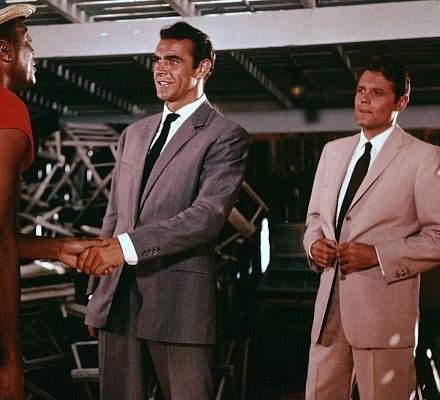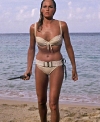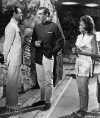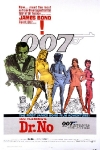The girls, the gadgets, the stylish violence and absurd deeds of derring-do… It’s no wonder that the handsome and ruthlessly heroic James Bond has been an icon of masculine wish fulfillment and feminine desire for 50 years. Harry Potter and “Twilight” films might sell more tickets at the moment, but Bond belongs to an elite group of internationally popular, impossible to kill, long-running heroes.
One thing that distinguishes Bond from your Superman, Batman and Sherlock Holmes types is that, with three quirky exceptions, the Bond character has been exclusively handled by the same small, family-owned production company which has maintained a tight creative grip on the franchise since the very first Bond movie. This has led to a remarkable degree of consistency, which can be a mixed blessing.
Keeping things fresh is surely a concern on the upcoming 23rd entry in the series, which was intelligently rebooted with 2006’s “Casino Royale,” but it’s been an issue since the Bond craze first kicked into overdrive with “Goldfinger” and “Thunderball” in the mid-sixties. In fact, there’s something enjoyably ritualistic about the Bond films, which repeat the same elements with just enough variation to keep fans returning film after film, even as they might grumble that the series hasn’t been the same since Sean Connery stopped playing Bond. Without the Bond girls, the amazing stunts, the pre-credit sequence and elaborate credits, and especially the theme, Bond just wouldn’t be Bond.
And so, we at Bullz-Eye will be looking at 007 film by film, with a special emphasis on those key ingredients in the Bond martini, both familiar and hopefully somewhat surprising, that have kept so many of us devoted to the series, movie after movie after movie, year after year after year. We’ll start at the beginning…
“Dr. No” (1962)
The Plot
James Bond, an MI6 spy with a “double O” designation which means he is both an investigator and an occasional assassin with a “license to kill,” is sent to investigate the murder of British operative and his secretary in Jamaica. The man behind it turns out to be a Chinese-German millionaire with an unhealthy interest in America’s space program and scores of expendable extras on his payroll. 007 gets his man, kills a few others, and makes a few new female friends.
The Backstory
It’s not surprising John F. Kennedy could relate to stories about an international man of mystery with whom he shared a vice or two. It’s more surprising he admitted to it in public. For a U.S. president to openly endorse a series of risqué potboilers was unheard of in the early 1960’s. Instead of hurting himself, however, Kennedy helped the books and turned a reasonably successful series into an early sixties publishing bonanza.
Seeing a potential to make a killing with a low-budget film of the character, an American expatriate producer residing in England, Albert R. “Cubby” Broccoli, teamed with Canadian-born Harry Saltzman, who’d been holding on to the Bond film rights. At first, the newly written “Thunderball” was to be the first film in the series. That project, however, got waylaid by an issue regarding the rights to that story which would haunt the producers for decades.
Perhaps because of its simplicity and memorable title villain, “Dr. No,” the sixth novel in the series, was then selected as the basis for the first James Bond movie. Numerous hands would produce material that made it into the finished screenplay, but the final version was largely the work of American screenwriter Richard Maibum. He would remain with the series through the remaining decades of his career.
As for casting Commander Bond, at first producers Broccoli and Saltzman sought a major star. Cary Grant apparently considered the role, but it was a no-go: the self-aware 58 year-old knew that his leading man days were numbered and he would have no part of a sequel. Patrick McGoohan, already famed as a TV spy in the UK as “Danger Man,” turned the part down and eventually became a cult television legend with the surreal, weirdly Bond-influenced, “The Prisoner.” Shakespearean actor Roger Johnson would also reject the idea of committing for several films. He would later play one of Bond’s pulp predecessors, Bulldog Drummond, in a pair of mid-sixties spy spoofs.
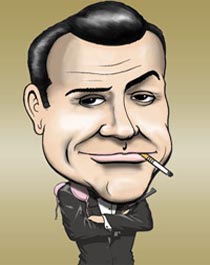 When the winner of a “play James Bond” contest was rejected by Broccoli, the producers looked elsewhere. In 1962, Sean Connery was known, if he was known at all, for playing a male ingénue role in Walt Disney’s live action “Darby O’Gill and the Little People.” Described as “merely tall, dark, and handsome” by New York Times critic A.H. Weiler and admittedly a bit roughhewn to play the ultra sophisticated spy, the 30 year-old Scotsman was nevertheless selected.
When the winner of a “play James Bond” contest was rejected by Broccoli, the producers looked elsewhere. In 1962, Sean Connery was known, if he was known at all, for playing a male ingénue role in Walt Disney’s live action “Darby O’Gill and the Little People.” Described as “merely tall, dark, and handsome” by New York Times critic A.H. Weiler and admittedly a bit roughhewn to play the ultra sophisticated spy, the 30 year-old Scotsman was nevertheless selected.
By that point, journeyman director Terrence Young was already on board. Young was a fortuitous choice. Seen by his colleagues as the suave, well-dressed, lady-killing model for the movie Bond, he took charge of the production and set about creating that thing we now call “a James Bond movie.” Crucially, he understood that also meant the image of Bond himself. A grateful Sean Connery would later credit him with helping to smooth out the rough edges he needed to embody the super-suave, super-deadly spy.
Just as important, Young managed to create an extravagant look on a modest budget while shooting at London’s Elstree studio and within spitting distance of Goldeneye, Ian Fleming’s Jamaica estate. The rest is about as historic as pop cinema gets.
Meeting Mr. Bond
Director Young must have realized he had a great screen presence on his hands with Sean Connery. He certainly gets the credit for crafting an introduction that ranks just behind the first appearances of Orson Welles’ Harry Lime in “The Third Man,” John Wayne’s Ringo Kid in “Stagecoach,” and Humphrey Bogart’s Rick Blaine in “Casablanca” in terms of sheer movie panache.
Set in a swanky London casino, the scene delays our first good look at Connery/Bond for about as long as it can. As he beats a beautiful opponent in the high-stakes game of Chemin de Fer, first we see an extreme close-up of the spy’s hands picking up his two-card hand. Then, we see that hand lighting a match. Next, Bond’s attractive new acquaintance introduces herself to the handsome stranger as “Trench, Sylvia Trench.” Only then do we finally see the tuxedo clad Bond/Sean Connery, lighting a cigarette hanging carelessly on his lips. “Bond, James Bond” he replies in his distinctive Scottish accent. Cue the Bond theme. In a matter of seconds, Sean Connery’s 007 was sold to the world.
The Bond Girls (Rule of 3)
James Bond is, of course, the most ridiculously effective womanizer in English-language popular culture. Moreover, regular viewers of the series know that Bond usually manages three romantic conquests per adventure, roughly one for each act of the screenplay. (In the novels, Bond is relatively chaste while on the job, sometimes delaying gratification until after the last page.) Despite the fact that seeing even married people sharing a bed together was still a naughty novelty in 1962, “Dr. No” pushed the censorship envelope and boldly established Bond’s sexual rule of three.
Sylvia Trench (Eunice Gayson) — Bond’s first ever onscreen hook-up, Miss Trench is every bit as sophisticated and in control as Bond, even if her Chemin de Fer strategy may be open to question. She was intended to be Bond’s ongoing on-again-off-again girlfriend throughout the series, but the stunning and statuesque Eunice Grayson would only return for the initial sequel, “From Russia with Love.”
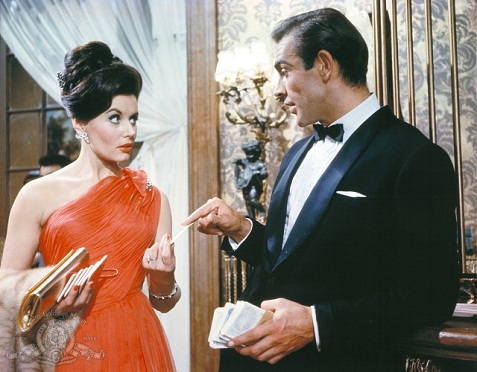
Miss Taro (Zena Marshall) — A embassy secretary secretly in the employ of Dr. No, the Chinese-Jamaican Taro is the first in a long line of treacherous beauties upon whom Bond would turn the sexual tables. She is also Bond’s first in-the-line-of-duty dalliance. (Sylvia Trench is strictly recreational.) In the manner of the time, Marshall was an English actress whose “exotic” looks often got her cast as women of various ethnicities. This was, needless to say, a less politically sensitive era in movie-making.

Honey Ryder (Ursula Andress) — Ian Fleming famously described professional seashell collector Honeychile Ryder’s naked emergence out of the Jamaican surf as resembling Botticelli’s Venus being birthed full-grown from the sea. Art and mythology aside, blonde and buxom Andress’s bikini-clad introduction set the stage for millions of youthful sexual awakenings. Almost a complete amateur during the making of “Dr. No,” Andress would go on to enjoy a significant film career despite the fact that her “Dr. No” performance was dubbed in later by another actress on account of her thick Swiss accent. Later films would include “What’s New, Pussycat?” opposite Peter O’Toole and “The 10th Victim” with Marcelo Mastroianni. (Check out a clip of this scene and more photos of Ursula here)

Friends and Colleagues
James Bond isn’t exactly the kind of guy to get misty-eyed thinking about the importance of friendship. Yet his working life does bring him into contact with an assortment of memorable characters. Not everyone was on board for the first Bond opus, but three of the series’s recurring characters do show up for the first time.
M
As portrayed by Bernard Lee, Bond’s boss is all business; both respectful of his underling’s heroics and a bit concerned about his love of danger. The part was dryly played for decades by the eternally miffed Bernard Lee. We’re told that in real life Mr. Lee was a witty raconteur and quite the life of the party. It’s called “acting” folks.
Moneypenny
“Dr. No” is the first of 14 appearances of the wonderful and thoroughly hot Lois Maxwell as the eternally smitten but entirely sensible Miss Moneypenny, M’s trusted secretary and the only person on earth the movie Bond may actually love. The backstory developed by Maxwell, Sean Connery, and Terrence Young, was that Bond and Moneypenny had enjoyed a youthful fling together, but both realized that a romance was incompatible with their respective roles at MI6. And so, cute and sexy repartee would have to substitute for actual sex. In this case…
Bond: Moneypenny! What gives?
Moneypenny: Me, given an ounce of encouragement.
“Dr. No” also marks the first appearance of a recurring bit of business where Bond would toss a hat onto a coat rack when entering Moneypenny’s office, the odd part being that Bond rarely wears a hat.
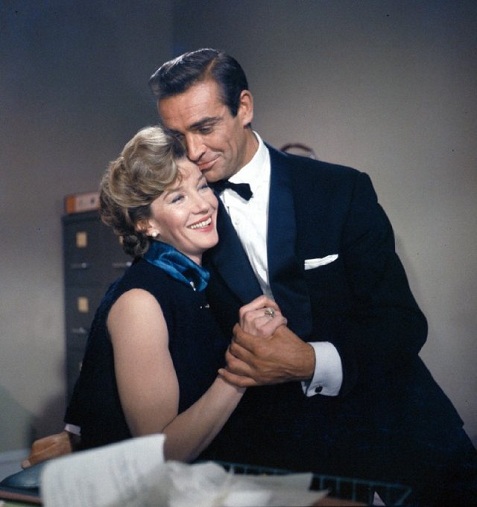
Felix Leiter
Bond’s opposite number in the American C.I.A. is the closest thing he has to a buddy in the series, though it’s a million miles from a full-blown bromance. In “Dr. No,” Leiter is Jack Lord, later to become legendary to 1970’s TV viewers as stolid, teetotaling supercop Steve McGarrett of “Hawaii Five-O.” Here, he drinks a little; you can’t not drink around Bond. Leiter would return frequently, but Lord never reprised the part. Instead, Bond’s counterpart would be portrayed over the decades by an assortment of actors of differing ages and ethnicities.
The Nemesis
Dr. No
Ian Fleming attributed the inspiration for the titular baddie to Sax Rohmer’s Fu Manchu, now almost universally seen as a viciously racist anti-Chinese stereotype. Fleming, who often included racial asides in the Bond novels, was clearly unperturbed by that. Even so, No’s half-German ancestry may have something to do with Germany’s Dr. Mabuse, who director Fritz Lang and others had turned into a symbol of international evil in a series of influential films. (Bond villain-to-be Gert Frobe of “Goldfinger” had already appeared in 1960’s “The Thousand Eyes of Dr. Mabuse,” and future “Man With the Golden Gun” Christopher Lee would soon be recreating Fu Manchu in a Bond-inspired series of mid-sixties British cheapies.) Since he’s in only one movie, Dr. No proves a lot easier to kill than his ancestors, even with his death-dealing metal hands. Still, he’s a memorable villain who sets the pattern for future Bond baddies with his cool stoicism and odd politeness.
Once termed “the spookiest actor in the American theater,” Jewish-Canadian Joseph Wiseman seems to have had a solid understanding of his character, an ultimate outsider. That aspect also played into his status as a member of SPECTRE, the non-ideological amalgamation of bad guys bent on world domination which allowed the Bond producers to tone down the cheerfully strident Cold War politics of Fleming’s novels. In the book, No was more simply in the employ of the Soviet assassination outfit, SMERSH.
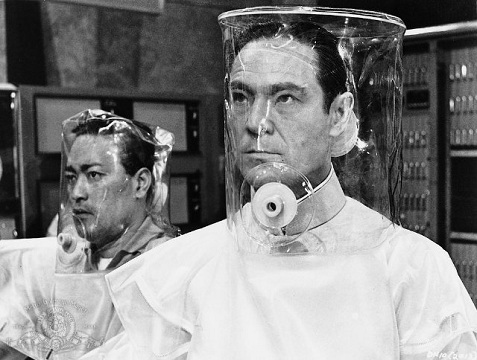
Lesser Bond Baddies
The crew of assassins, toadies, and femme fatales we’ve come to expect in all Bond films appears in “Dr. No.” This time we’ve got the “Three Blind Mice,” a trio of Jamaican hit-men — all played by uncredited actors — the unfortunate Prof. Dent (Anthony Dawson), who we’ll discuss below, the alluring though downright slutty Miss Taro, and also a pretty photographer who’d rather have her arm broken than say word one about Dr. No. (Marguerite LeWars, Miss Jamaica 1962)
License to Kill
Even after several decades of mindlessly brutal so-called heroes, James Bond’s first onscreen use of his Double-O license to commit murder remains oddly one of the single most disturbing moments in the Bond cannon. Not surprisingly, it took a bit of persuasion to get the “unsporting” killing of the conniving double agent, Prof. Dent, through censorship.
Don’t get us wrong, Bond has his reasons. However, Dent is unarmed by this point, having discharged all the bullets in his gun into a bed he thinks contains a sleeping Bond. Moreover, Bond is actually destroying a valuable intelligence asset, and there is still something slightly sickening about a putative hero killing a man in cold blood, even a loathsome and cowardly multiple murderer. But that’s what makes it so memorable. The scene gave rise to a quotable Bond line reportedly often repeated by UK schoolboys: “You’ve had your six!”
The Gadgets and Guns
Does a gun count as a gadget? Bond is forced by M to switch from his beloved Beretta to his signature Walther PPK for reasons that we understand make little ballistic sense. Then, there’s the armored-tractor tank-like thing with an attached deadly flame thrower which is almost comically disguised as a dragon. Is that a gadget?
The fact of the matter is that it was early days in 1962 and thrifty Cubby Broccoli wasn’t about to spend a ton of money on an unproven property. The elaborate doodads would come later.
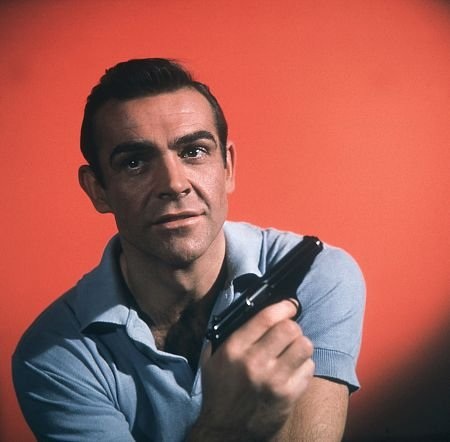
The Car
Along with the guns and gadgets, most Bond fans obsess about the cars as well. The cars take on more importance as the series progresses, but Bond gets off to a nice start in Dr. No by driving a Sunbeam Alpine 1961 Series II along the Jamaican countryside during the obligatory automotive chase scene.
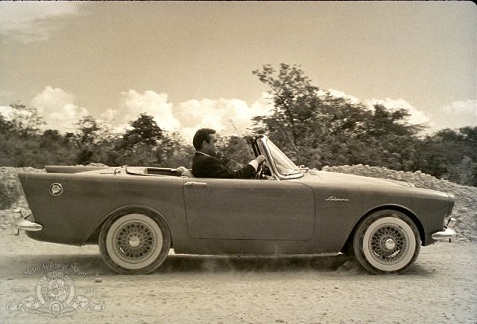
The Exotic Locales
Bond’s only trip this time is to Jamaica. However, Ted Moore’s great cinematography gave sixties audiences a real eyeful on a small budget, and we’re not just talking about Ursula Andress. The often outlandish sets and the stunning beaches of Jamaica are a visual treat. See the restored version on Blu-Ray or projected in a state-of-the-art theater, if you can. Amazing.
The Outrageous Villain’s Lair
Ken Adam, who remained with the series through 1977’s “The Spy Who Loved Me,” is easily one of the two or three most distinctive production designers of all time. Here, he makes the most with least. His sneakily tongue-in-cheek approach to minimalist set design includes an almost bare holding cell with a single circular skylight casting a cross-hatched shadow — all the better to make poor Prof. Dent seem even more small and pathetic.
And let us not forget Dr. No’s living room with the giant fish tank. It was actually, a film projection which editor Peter Hunt was forced to hunt down at the last minute, and so the fish in it were much larger than they ought to have been. According to Hunt, that led to some new dialogue between Dr. No and Bond about “minnows pretending they’re whales.”
The Opening
This is the only official Bond film without a pre-credit sequence. Thank the spy gods, however, designer Maurice Binder was already on board for the credits themselves.
Firstly, Binder created the signature intro, now so much a part of the Bond mystique, in which we see a silhouetted Bond (actually stunt man Bob Simmons this time ’round) through a gunman’s site. Bond turns around and shoots at the audience/assailant, and then the screen is covered in a wash of animated blood. As stylized as it is, it’s almost shockingly graphic for its day. It’s also probably the most effective logo ever designed for a film or television series.
That’s followed by a spiffy and abstract Saul Bass-influenced credit sequence set to the James Bond theme. Then the music changes to a calypso version of “Three Blind Mice” and we see the colorful silhouettes of the trio of assassins who set the events of “Dr. No” in motion. It’s hard to imagine a more memorable opening, except that we know that even better ones will be following.
And speaking of that great James Bond theme…
The Music
There’s no doubt that composer-conductor-arranger John Barry’s compositions and orchestrations for the Bond films set the standard for spy music. There’s just one little difficulty that comes up with “Dr. No”: Barry is not the credited composer. The film’s score, including that incredibly recognizable Bond theme, is supposed to have been written by Monty Norman.
That leads to a question: Who the hell is Monty Norman? Well, Norman is an otherwise little-known theater composer and pop musician who has remained otherwise little-known despite having his name on one of the two or three most recognizable pieces of film music ever written. Something seems odd here and there has been libel litigation over it in the United Kingdom, which Norman nevertheless won.
Though he stopped short of saying he’d actually written the Bond theme, Norman’s credit for the melody always seemed to stick in the late John Barry’s craw. Barry, who arranged and conducted the music for “Dr. No,” would point out that he was the person who would be asked back and write a great deal more music in the same vein, and it’s an impossible point to argue with. It’s also true that the score for this first film is entirely undistinguished compared to the great work to follow, though many point out the Bond theme is similar to an earlier composition by Norman. Regardless, the only memorable pieces of music in it are variations on the Bond theme, whoever wrote it, and the silly but catchy calypso number, “Underneath the Mango Tree,” which Norman pretty definitely wrote.
The One-Liners
“Dr. No” has it’s share of witty badinage, some of it quoted elsewhere, but the jokey asides, often made after a killing, were mostly still to come.
The Cocktail
First a Jamaican room service waiter and then no less than Dr. No himself inform the audience of Bond’s movie cocktail of choice: vodka martini, twist of lemon, shaken not stirred. Cocktail aficionados will note with horror that the Jamaican hotel serves the drink in what appears to be a very small Tom Collins glass — shocking! Dr. No provides the superior service, serving the beverage in an appropriately shaped, small cocktail glass. Probably perfectly chilled, too. Just one thing, that martini is extremely tiny by modern standards, though surely made with 100 proof vodka.
Random Fact
Prior to becoming a major force in reggae and rock music, a young Anglo-Jamaican named Chris Blackwell served on the “Dr. No” production in several capacities. He had been an acquaintance of both Ian Fleming and Monty Norman. The Island records founder can be heard extensively on the “Dr. No” DVD/Blu-Ray commentary.
Related Posts
You can follow us on Twitter and Facebook for content updates. Also, sign up for our email list for weekly updates and check us out on Google+ as well.
Posted in: Entertainment, Movies
Tags: 007, 007 50th anniversary, 007 films, 007 guns, 007 movies, 007 One by One, 007 villains, Beretta, Bond films, Bond movies, Bond one by one, Bond villains, Dr No opening, Dr. No, Eunice Gayson, Felix Leiter, femme fatales, Honey Ryder, Honeychile Ryder, Ian Fleming, James Bond, James Bond 007, James Bond 50th anniversary, James Bond blog, James Bond cars, James Bond craze, James Bond guns, James Bond movies, James Bond style, James Bond villains, James Bond violence, license to kill, M, Miss Moneypenny, Miss Taro, Moneypenny, Monty Norman, Rule of 3, Sunbeam Alpine 1961 Series II, Sylvia Trench, Ursula Andress, Walther PPK, Zena Marshall




